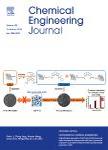版权所有:内蒙古大学图书馆 技术提供:维普资讯• 智图
内蒙古自治区呼和浩特市赛罕区大学西街235号 邮编: 010021

作者机构:Chinese Acad Sci Tech Inst Phys & Chem Beijing 100190 Peoples R China Chinese Acad Sci Beijing Natl Lab Mol Sci Lab Polymer Phys & Chem Inst Chem Beijing 100190 Peoples R China Univ Chinese Acad Sci Sch Future Technol Beijing 100049 Peoples R China
出 版 物:《CHEMICAL ENGINEERING JOURNAL》 (Chem. Eng. J.)
年 卷 期:2025年第505卷
核心收录:
学科分类:0830[工学-环境科学与工程(可授工学、理学、农学学位)] 0817[工学-化学工程与技术] 08[工学]
基 金:National Natural Science Foundation of China National Key Research and Development Program of China [2022YFA1207600]
主 题:Carbon dots NIR-II imaging Angiography Phototherapy
摘 要:Carbon dots (CDs) have recently gained attention in near-infrared (NIR, 700-1700 nm) bioimaging and image- guided tumor phototherapy due to their outstanding optical properties and favorable biocompatibility. However, constructing CDs for NIR-II fluorescence imaging-guided phototherapy remains challenging. In this study, we present molecularly engineered NIR-II emitting carbon dots assemblies (NECDs-A) for advanced NIR-II bioimaging and synergistic photodynamic therapy (PDT)/photothermal tumor therapy (PTT). By using terephthalaldehyde and pyrrole as specifically selected precursors, the resulting NECDs-A feature a large conjugated framework, with high graphitic nitrogen content and abundant surface carbonyl groups. These structural characteristics enable NECDs-A to exhibit NIR-II fluorescence emission, with a peak at 950 nm and a maximum wavelength extending beyond 1400 nm, achieving precise tumor visualization and high signal-to-noise ratio whole-body angiography. Additionally, the as-prepared NECDs-A demonstrate type-I photodynamic activity and a high photothermal conversion efficiency (eta = 45.3 %) under 808 nm laser irradiation. In vitro and in vivo studies confirm their ability to generate reactive oxygen species (ROS) and heat, leading to efficient image- guided tumor eradication without noticeable toxicity. This work provides a new example of NIR-II emitting CDs design strategies and their application in tumor phototherapy guided by NIR-II imaging.